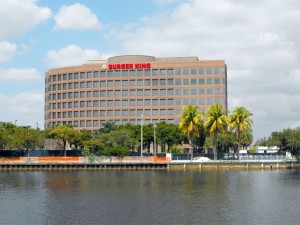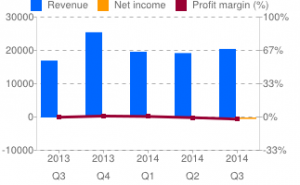External blog link: There’s No Excuse for Avoiding Strategy
http://blogs.hbr.org/2014/10/theres-no-excuse-for-avoiding-strategy/
Let’s start with a famous remark put forward by Jack Welch, which is also generally recognized as the definition of Strategic Management–“Strategic Management is trying to understand where you will fit in tomorrow’s world and deciding where you want to be — an getting there. ” From my perspective, I entirely agree with Frank’s opinion, THERE’S NO EXCUSE FOR AVOIDING STRATEGY!
Some people might argue that the market is changing constantly, therefore, it is more practical to focus on the present. In a way, people holding this kind of opinions are true—at least the market does change constantly. However, they ignore a fact that focusing on current situation is also the application of one business strategy called transient strategy. Strategy is the tool that helps a firm succeed in dealing with the changing market. If a firm clearly knows about its SWOT and PEST before it implements a vital decision, it gains at least an across-the-board insight into the environment, even though the information might not be perfectly precise. Facing the market in a state of flux, by applying various strategies, all a firm needs to do is alter the conditions entered into the template. Moreover, strategies do provide a firm with a clear direction that it should move towards, since strategies align the mission and vision with operations.
Despite to the fact that scholars are still debating upon deliberate strategy VS emergent strategy(also Porter VS Mintzberg), strategies for top performers are always mixed and they will come to the most cogitative ones. Would corporates with impeccable strategies always win in the market? Probably not since they might ignore actual practical application. But I know that firms without reasonable strategies are bound to fail.
References:
1. The Importance of Strategy. Boundless
https://www.boundless.com/management/textbooks/boundless-management-textbook/strategic-management-12/strategic-management-86/the-importance-of-strategy-416-4340/
2. Andrew Latham. “The Strategic Importance of an Organization’s Corporate Strategy”. Demand Media.
http://smallbusiness.chron.com/strategic-importance-organizations-corporate-strategy-12246.html
3. Paul B. Brown. “Why Business Plans Are A Waste of Time”. Forbes. Aug 14, 2013
http://www.forbes.com/sites/actiontrumpseverything/2013/05/15/the-most-successful-people-take-small-smart-steps-toward-their-goals/








Recent Comments